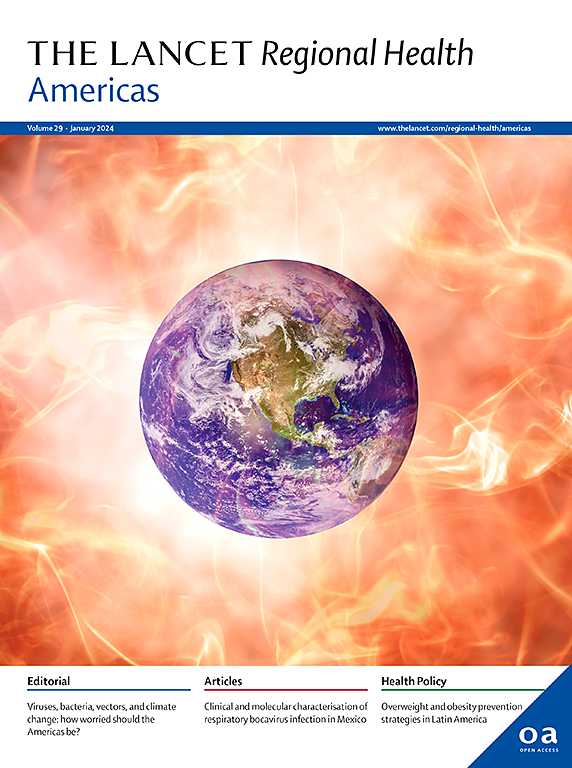来自OFELIA的onasemnogene abparvovec对体重≤17 kg且≤24个月大的脊髓性肌萎缩患者的安全性和耐受性,这是一项4期、开放标签、多中心、非随机、介入性研究
IF 7
Q1 HEALTH CARE SCIENCES & SERVICES
引用次数: 0
摘要
背景:dofelia旨在评估来自拉丁美洲的脊髓性肌萎缩症(SMA)患者接受onasemnogene abparvovec一次性基因替代疗法后的安全性和运动里程碑相关结果。sofelia (NCT05073133)是一项4期、18个月、开放标签、多中心、非随机研究(巴西、阿根廷),针对年龄≤24个月和≤17公斤的有症状的SMA患者(按年龄[0-12个月vs 12-24个月]和体重[8.5 kg vs≥8.5 kg]分组)进行onasemnogene abparvovec治疗(1.1 × 1014vg /kg)。主要终点是安全性。次要终点是根据世界卫生组织多中心生长参考研究标准,在筛查和onasemnogene abparvovec输注后6、12和18个月测量的运动里程碑。16例患者入组(n = 11/16,女性;n = 10/16 SMA 1型)(n = 17筛选)。所有报告的不良事件(ae)。11例报告严重ae;12例报告了特别关注的AE,最常见的是肝毒性(无症状)(n = 11/12),血小板减少(n = 5/12)和血栓性微血管病(n = 2/12)。发生2例死亡:1例可能与治疗有关(AST >;20倍正常上限、败血症、感染、多器官衰竭、血栓性微血管病),1例因呼吸道感染。大多数患者在绝经后18个月仍能维持/改善运动里程碑(例如,坐、爬、站、走),包括12 - 24个月年龄组的患者。最常见的ae是肝毒性、血小板减少症和血栓性微血管病;发生率(肝毒性、血小板减少)与6个月大和8.5公斤重患者的研究相似。显示运动里程碑的疗效数据表明,拉丁美洲SMA患者可能受益于onasemnogene abparvovec治疗。该研究由瑞士巴塞尔的诺华制药公司资助。本文章由计算机程序翻译,如有差异,请以英文原文为准。
Safety and tolerability of onasemnogene abeparvovec for patients with spinal muscular atrophy weighing ≤17 kg and ≤24 months old from OFELIA, a phase 4, open-label, multicenter, non-randomised, interventional study
Background
OFELIA aimed to evaluate outcomes related to safety and motor milestones following administration of onasemnogene abeparvovec, a one-time gene replacement therapy, for patients with spinal muscular atrophy (SMA) from Latin America.
Methods
OFELIA (NCT05073133) is a phase 4, 18-month, open-label, multicenter, non-randomised study (Brazil, Argentina) of onasemnogene abeparvovec treatment (1·1 × 1014 vg/kg) for symptomatic patients with SMA ≤24 months of age and ≤17 kg (grouped by age [0–12 vs >12–24 months] and weight [<8·5 kg vs ≥8·5 kg]). The primary endpoint was safety. The secondary endpoint was demonstration of motor milestones measured at screening and at 6, 12, and 18 months post-onasemnogene abeparvovec infusion, according to the World Health Organization Multicentre Growth Reference Study criteria.
Findings
Sixteen patients were enrolled (n = 11/16 female; n = 10/16 SMA type 1) (n = 17 screened). All reported adverse events (AEs). Eleven reported serious AEs; 12 reported an AE of special interest, most commonly hepatotoxicity (asymptomatic) (n = 11/12), thrombocytopenia (n = 5/12), and thrombotic microangiopathy (n = 2/12). Two deaths occurred: one possibly related to treatment (AST >20 × upper limit of normal, sepsis, infection, multiorgan failure, thrombotic microangiopathy) and one due to respiratory infection. Most patients maintained/improved motor milestones up to 18 months post-onasemnogene abeparvovec (e.g., sitting, crawling, standing, walking), including those in the >12–24-month age group.
Interpretation
Most common AEs of special interest were hepatotoxicity, thrombocytopenia, and thrombotic microangiopathy; incidence rates (hepatotoxicity, thrombocytopenia) were similar compared with studies in patients >6 months of age and >8·5 kg. Efficacy data on demonstration of motor milestones suggest that Latin American patients with SMA may benefit from onasemnogene abeparvovec treatment.
Funding
The study was funded by Novartis Pharma AG, Basel, Switzerland.
求助全文
通过发布文献求助,成功后即可免费获取论文全文。
去求助
来源期刊

Lancet Regional Health-Americas
Multiple-
CiteScore
8.00
自引率
0.00%
发文量
0
期刊介绍:
The Lancet Regional Health – Americas, an open-access journal, contributes to The Lancet's global initiative by focusing on health-care quality and access in the Americas. It aims to advance clinical practice and health policy in the region, promoting better health outcomes. The journal publishes high-quality original research advocating change or shedding light on clinical practice and health policy. It welcomes submissions on various regional health topics, including infectious diseases, non-communicable diseases, child and adolescent health, maternal and reproductive health, emergency care, health policy, and health equity.
 求助内容:
求助内容: 应助结果提醒方式:
应助结果提醒方式:


